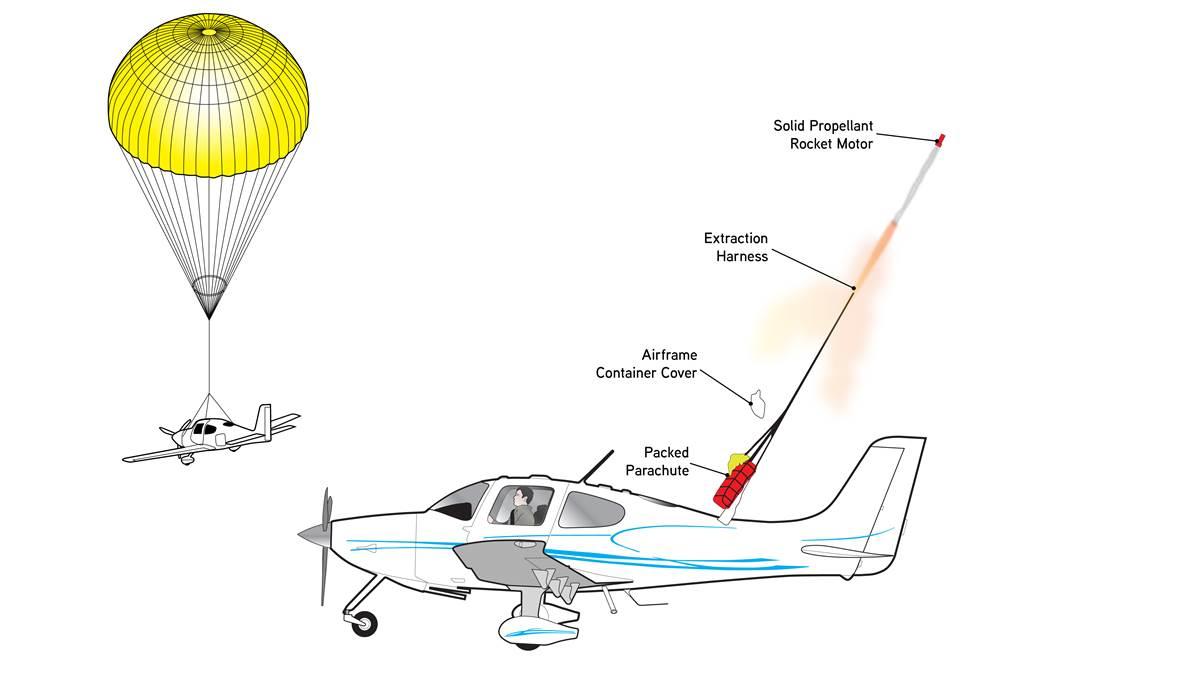
One of the first things some passengers unfamiliar with small airplanes ask is where the parachutes are. That question is not so crazy anymore. Although they are available on many airplanes, the most famous installation of an airframe parachute system is on Cirrus models, which the company has branded Cirrus Airframe Parachute System (CAPS). The system goes into action when someone pulls the red handle on the headliner between the pilot and passenger. From here, the entire process then takes about two seconds.
A custom-designed rocket motor fires out of the airplane, pulling an extraction harness with it. The extraction harness is tied to the canopy of the parachute, pulling the parachute aft of the airplane. As the canopy of the parachute starts to expand, the energy of the aircraft dissipates, which allows the canopy to fully open. To prevent it opening too fast at high speed and too slow at low speed, engineers developed the “slider,” a ring that travels down the suspension lines as the canopy opens.
The aircraft is held under canopy by a number of nylon straps that break through the composite skin. Although the system was designed only to save lives and not airplanes, various deployments have shown that the 19 mph or so descent rate usually allows the aircraft to fly again.
Creative engineering
Most parachutes are made of nylon. The typical Army-issue model weighs around 55 pounds, including the reserve chute. At 1,000 square feet of surface area, the canopy of the BRS parachute would weigh hundreds of pounds if it were made of nylon, making it useless for airplanes. The company uses a composite material so that the parachute canopy weighs in at a svelte 30 pounds.



